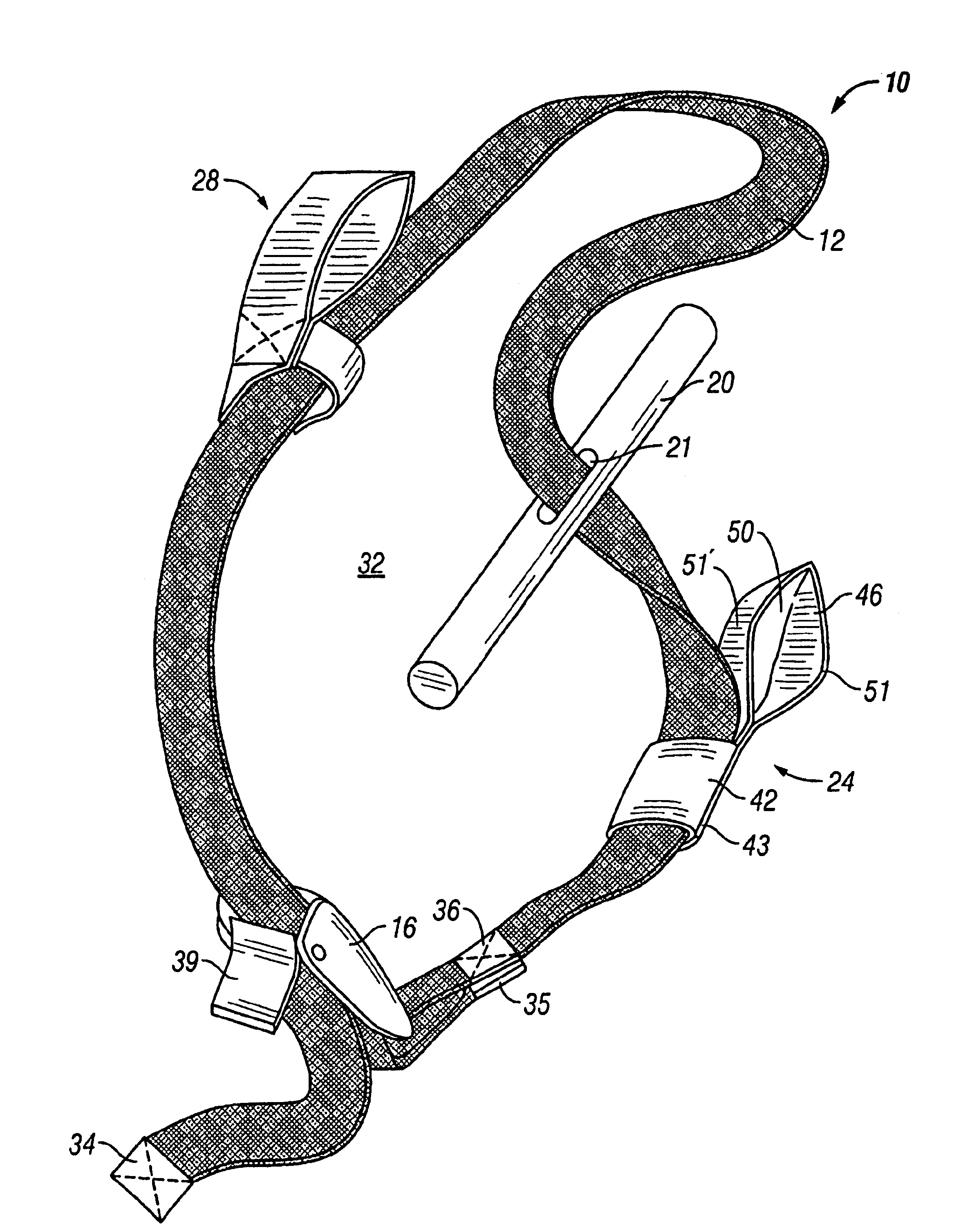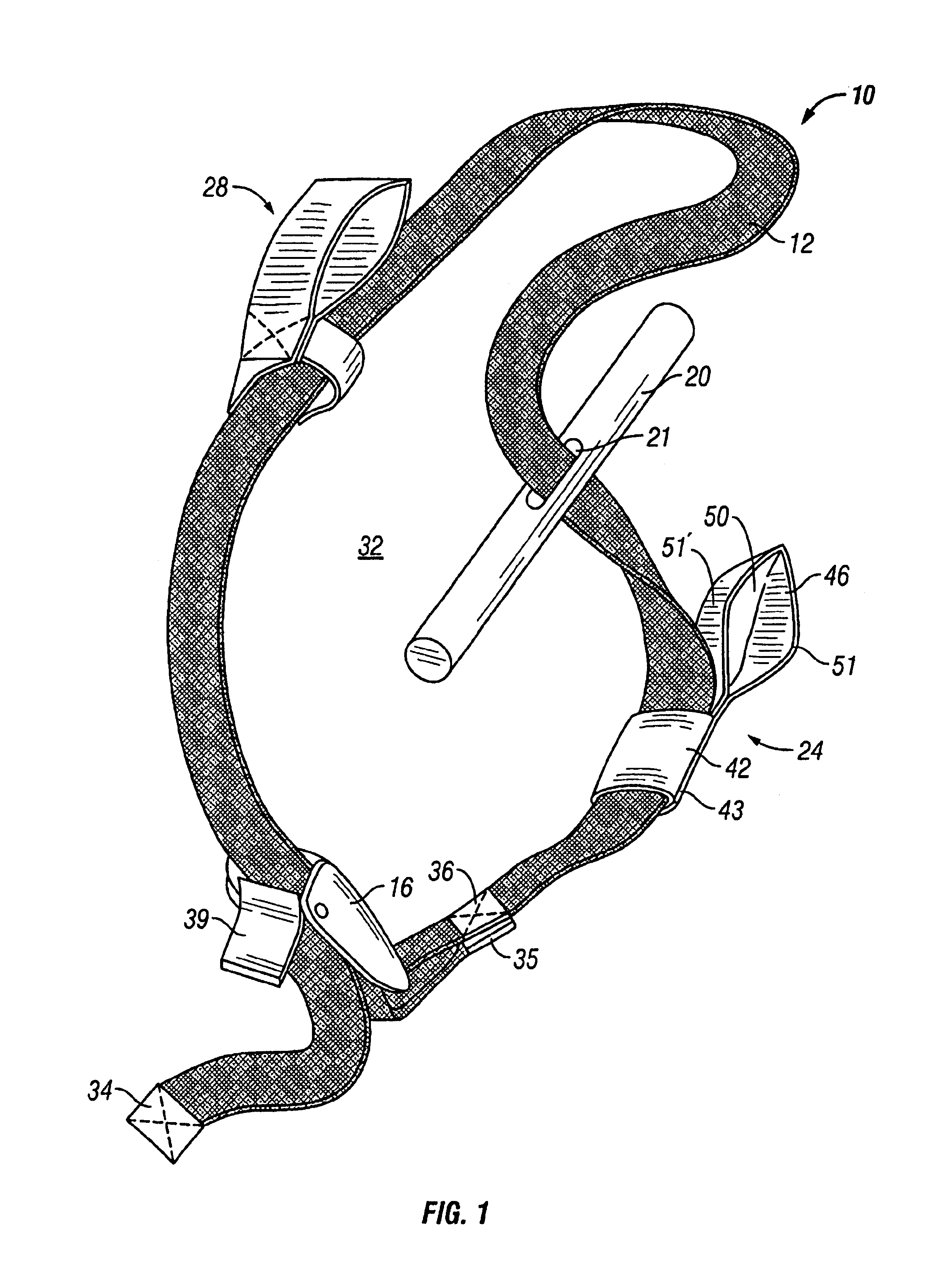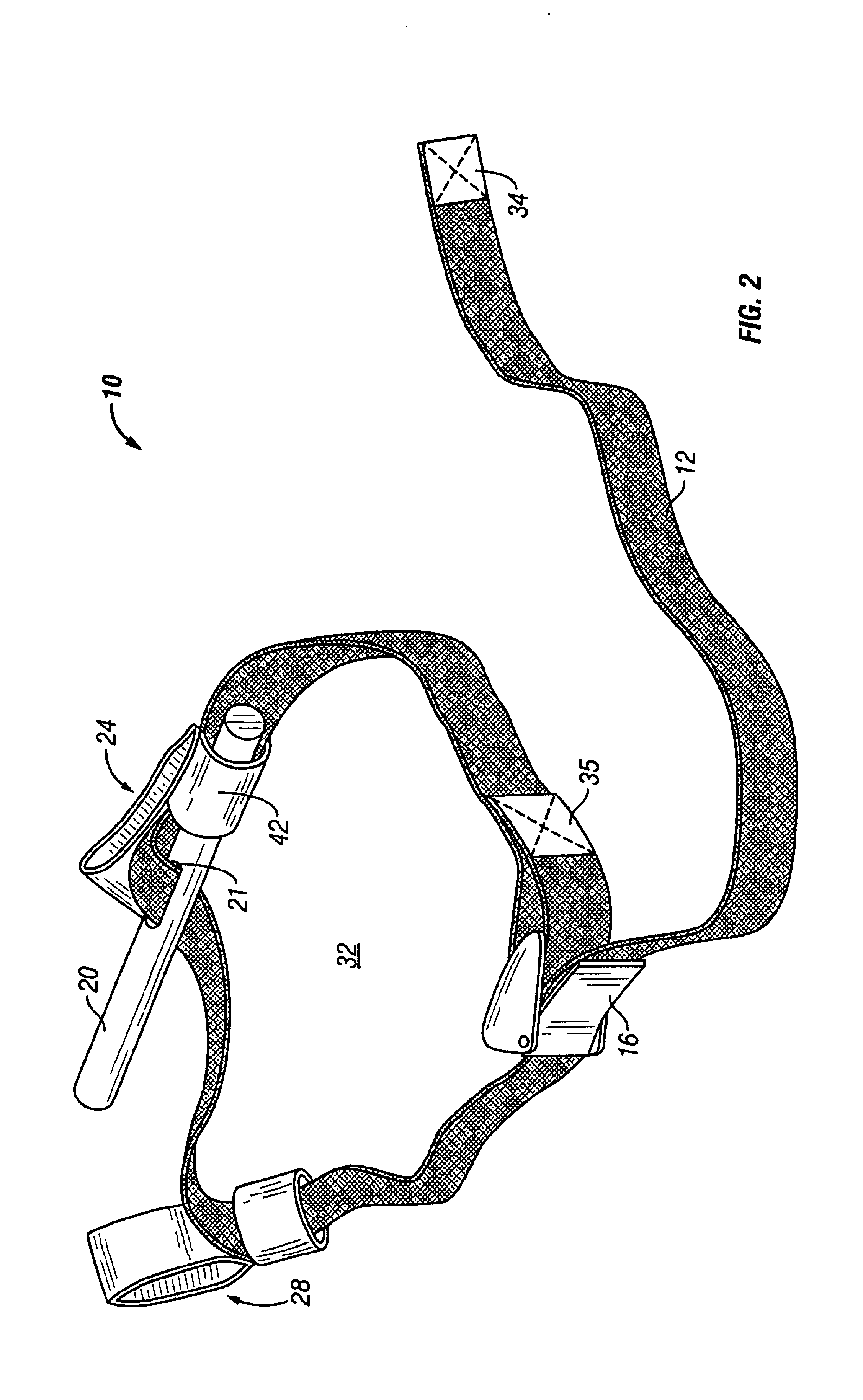Tourniquet
a technology of tourniquets and rods, which is applied in the field of medical tourniquets, can solve the problems of insufficient design of tourniquets in the current inventory of u.s. military, unreliable and time-consuming methods for securing rods to maintain strap constriction, and tissue death in the affected limb
- Summary
- Abstract
- Description
- Claims
- Application Information
AI Technical Summary
Benefits of technology
Problems solved by technology
Method used
Image
Examples
Embodiment Construction
)
[0023]The tourniquet apparatus of the invention is simple in construct and use, but marks a significant improvement over existing tourniquets commonly in use.
[0024]Reference is made to FIG. 1. Tourniquet 10 of the invention features five principle components: strap 12, cam buckle 16, tightening rod 20, and two essentially identical loop-pocket assemblies 24, 28. Strap 12 performs the function of conventional tourniquets, as it is looped around the patient's affected limb or extremity and tightened to constrict the flow of blood. Strap 12 is preferably made from generally non-stretchable nylon webbing strap material, such as 1-inch woven nylon strap. Strap 12 has an overall length, before being looped and sewn according to the invention, of about preferably 28 inches to about 36 inches, although it is immediately realized that the strap can be manufactured to any suitable length, including great lengths permitting the tourniquet to be used about the thigh of larger adults (e.g., a l...
PUM
 Login to View More
Login to View More Abstract
Description
Claims
Application Information
 Login to View More
Login to View More - R&D
- Intellectual Property
- Life Sciences
- Materials
- Tech Scout
- Unparalleled Data Quality
- Higher Quality Content
- 60% Fewer Hallucinations
Browse by: Latest US Patents, China's latest patents, Technical Efficacy Thesaurus, Application Domain, Technology Topic, Popular Technical Reports.
© 2025 PatSnap. All rights reserved.Legal|Privacy policy|Modern Slavery Act Transparency Statement|Sitemap|About US| Contact US: help@patsnap.com



